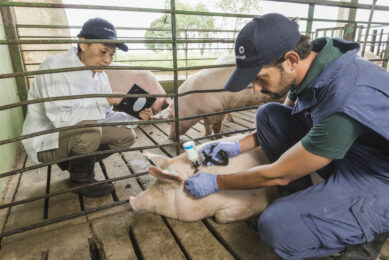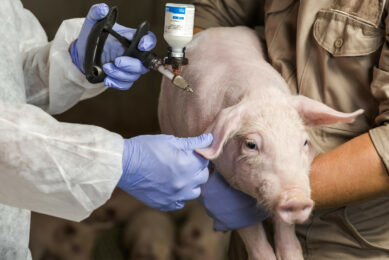PRRS infections – where are we post PCV2?

With PCV2 vaccines becoming more available and now many countries are seeing the benefits where does that leave us with PRRS virus, will we still need to vaccinate against it?
I have to admit that I have always found PRRS (porcine reproductive and respiratory syndrome) virus an enigma. On its own, the virus causes very little disease in challenge studies, using the European strain in particular (Van Reeth and others, 1994). However when it was mixed with porcine respiratory corona virus or with swine influenza virus (H1N1) production was depressed by 2.6 and 5.6 kgs in a 14 day trial period, respectively. Then PCV2 came along and really superseded PRRS, particularly here in the UK.
I thought that once we had overcome PCV2 then farmers would start to manage PRRS possibly, without vaccinating growing pigs and depending just on sow vaccination. In a recent meeting with producers, I was politely informed that I was wrong and they would continue to vaccinate.
The PRRS virus destroys macrophages, cells which eat up foreign bacteria, especially those in the lung and this allows other organisms such as other viruses, Mycoplasma hyopneumoniae and bacteria such as Streptococcus suis, Haemophilus parasuis, Actinobacillus pleuropneumoniae and even Pasteurella multocida to colonise the lung more easily. As this major defence mechanism is damaged then these organisms can multiply and cause more severe pneumonias than before. I was always surprised when in the US they used a PRRSV vaccine strain initiator followed by S. suis to induce their meningitis models. We sometimes see meningitis with late PRRSV infections in finishers.
The difference between the US and EU isolates is also quite surprising as they developed at a similar time, but some of the isolates show upto a 45% difference in some of their genetic details, or open reading frames (ORF). The US strains tend to be more virulent than the EU ones, but in some major pig producing countries they have the US strains in addition and many of these appear to be associated with vaccinal strains.
It is also very difficult to calculate the cost of the disease due to the variation in the disease syndromes that can be caused. White (1992) showed that following an outbreak on two finisher farms production output was reduced by 4% in liveweight terms. If we say there are 240million pigs produced in Europe and about 35% of farms are infected and on average production is reduced by 4% or approximately €5 per pig the disease could cost approximately €420million in Europe, which is highly significant. This is without the effects on reproduction.
How will other countries manage PRRSV in the future now PCV2 is being brought under control?
©











